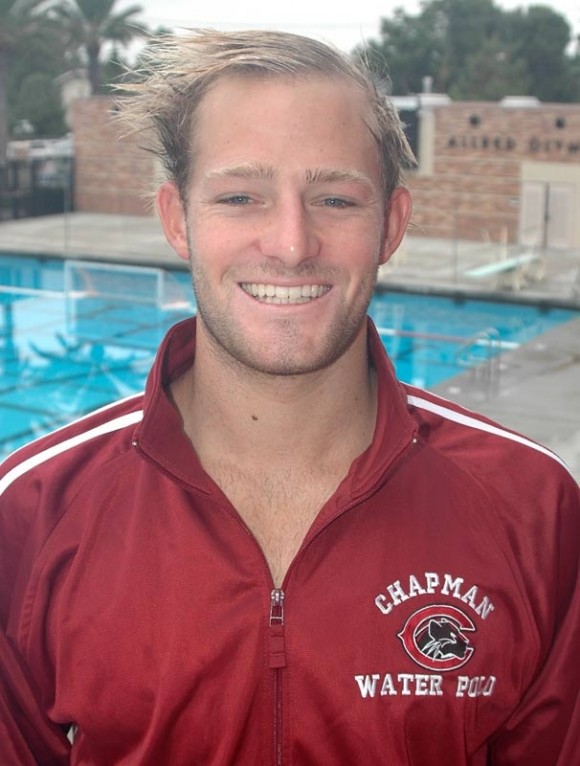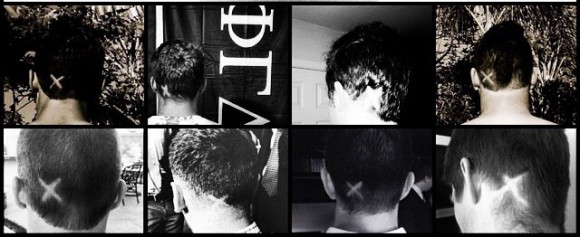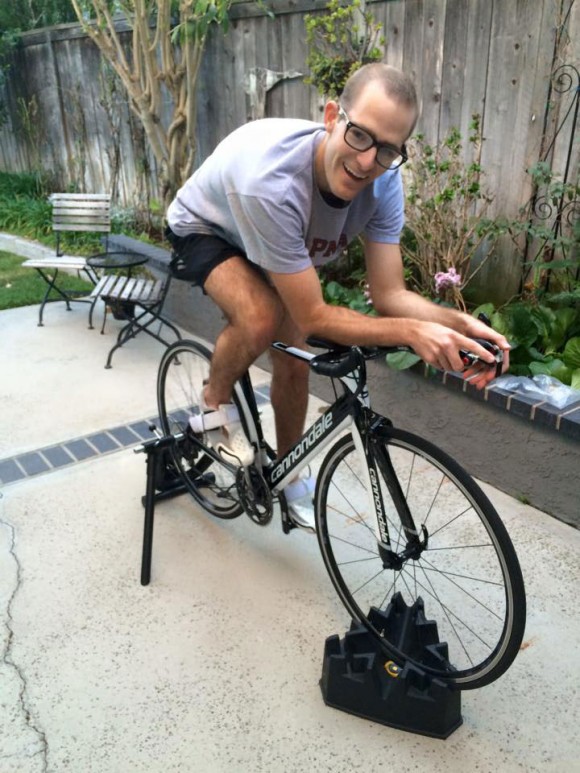
X Marks the Spot
November 13, 2015
On October 30, 2014 Dylan Trumbull headed to a doctor’s appointment to find out why he was having such severe headaches over the summer. Dylan originally assumed they were concussion related from years of participating in sports but the severity led him to believe that it was something completely different.
That Thursday an MRI revealed that Dylan had a tumor on his fourth ventricle called an Ependymoma – a pediatric tumor that is usually found in young children and older adults.
valium online no prescription
valium online without prescription
buy valium no prescription
buy ambien no prescription
diazepam online without prescription
online pharmacy
buy phentermine no prescription
buy tramadol online no prescription
soma online pharmacy
buy ativan online without prescription
klonopin online no prescription
The tumors location was less than ideal, located right above his brain stem. The location alone made complication rates extremely high with vision, motor movement, physical activity and mortality.
“I was frightened upon my initial research when I found out the mortality rate of this surgery was said to be high” he expressed.
Within four days he flew out to Arizona to see a specialist, Dr. Robert Spetzler from the Barrow Neurological Institute at the St. Joseph’s Medical Center.
Dr. Spetzler, an experienced world class surgeon, explained to him that he was lucky. The tumor was completely encapsulated and was the size of a golf ball. Fortunately, it hadn’t expanded and Dr. Spetzler felt comfortable operating on the tumor, which he specialized in. The operation would take place on November 11, giving him a week to return home and inform friends and family of his situation.
In the week before his surgery he spent time with friends and family, trying not to overwhelm himself with the complication and struggles he would soon inevitably face.
“My doctor had high hopes of me regaining 98 percent of functionality after surgery,” he recalled. “Right before surgery I went public about my situation. I received an overwhelming amount of support from my family and friends with texts and phone calls. The morning before I flew out for my surgery, two of my friends from Chapman (Drew Moyer and Tim Breitfeller) came by and shaved X’s on the back of their head to match my haircut.
Before Dylan knew it numerous brothers from the Fiji Chapter and former teammates from Chapman’s water polo team had shaved X’s on the back of their head for him. The Chapman community was rallying around him to support him in his time of need.
“I remember receiving a text from one of my professors asking why her students had X’s shaved on their heads similar to mine and I felt thankful that people were supporting me. It was good moral support when you look d own at your phone three days before surgery and see that kids had the same haircut that I had. In college, your hair is part of your identity and how you stand out, the fact that people shaved their head for a greater cause was amazing.”
own at your phone three days before surgery and see that kids had the same haircut that I had. In college, your hair is part of your identity and how you stand out, the fact that people shaved their head for a greater cause was amazing.”
On November 11, Dylan underwent a seven-plus hour surgery. He spent three days in the Intensive Care Unit and four days in the inpatient unit of the hospital before he would be discharged to a Rehab Unit for two weeks. Dylan went through 30 sessions of radiation and numerous types of rehab and therapy over the next three months before returning to Orange County in middle of January.
“When I came out of su rgery, talking and walking were huge obstacles for me. My eyes were crossed and I was seeing double of everything, which made balance very difficult for me.” Dylan had to retrain his brain. He now had to cognitively think about taking a step up stairs. He had to rediscover how to hold a conversation.
rgery, talking and walking were huge obstacles for me. My eyes were crossed and I was seeing double of everything, which made balance very difficult for me.” Dylan had to retrain his brain. He now had to cognitively think about taking a step up stairs. He had to rediscover how to hold a conversation.
Professor Angela Mandas from Chapman University was instrumental in Dylan’s recovery. “I did speech therapy with her for a few months. She introduced me to Brain Rehabilitation and Injury Rehab (B.R.A.I.N) and got me involved with Friends with Brain Injuries (F.B.I).” He was able join the support group and take advantage of different opportunities, such as Yoga.
Dylan recalls, “Back in November, I was intimidated by the phone because the conversation could go any direction. The phone was a huge intimidation for me.” Now, Dylan can hold conversations with just about anyone over the phone, on a computer or in person. “Just a month ago, I was able to sit down and watch the Chapman water polo game against Cal Lu; walk up the stands, walk up to people, say hi to a lot of people and have different conversations. It was pretty neat.”
Dr. Robyn Ravok has also been working with Dylan since January at the Vision Development Center on helping Dylan compensate, adjust and learn how to work with eyesight difficulties. “For example, when I am looking at things I hold books higher or sit lower in a chair when looking at a computer to get rid of the shadowy double effect I still deal with.”
A big challenge associated with Dylan’s vision impairment was returning to a physical lifestyle. A high energy kid, Dylan grew up playing water polo and swimming. A four-year starting driver for the Chapman men’s water polo team, Dylan graduated a senior captain and a four-time WWPA All-Academic Selection. He appeared in 68 games, scored 48 goals, tallied 52 assists and recorded 42 steals for the Panthers.
After surgery, Dylan was determined to get back to the lifestyle he loved, attending physical therapy with Steve Itrich twice a week. His mentality shifted as he interacted with people facing different struggles at FBI and other rehab centers as he began to think, “I can run, I can swim and I can bike – there are a lot of people who physically can’t, so if I can, why shouldn’t I?”
Prior to his diagnosis, Dylan set a goal to compete in an Iron Man within five years of graduating from Chapman. Still ambitious and passionate as ever after surgery, Dylan took baby steps to reach his goal. It began with standing up. Then walking from a bed to a chair. Then walking down the hall to finally up stairs.
Dylan’s first goal was to get back to competing. He ran in the Woodbridge 5K on July 4, less than eight months after surgery. In reference to taking things slow, Dylan admits, “It has been tough. When I was growing up, being high energy, I always had to tell myself to slow down and double check. But now I am double checking my double check. As much as I want to move  forward and go to the next level, sometimes I know I can’t.”
forward and go to the next level, sometimes I know I can’t.”
However, Dylan continued to push himself to the next step. Following his 5K accomplishment, he went on to participate in the Long Beach Triathlon. “The feeling I got after finishing my first tri was a sense of accomplishment. Just thinking of where I was right after surgery to where I was at that moment and who got me there,” Dylan recalled.
Dylan then competed in the World Body Surfing Contest in Oceanside, Calif. and in the Newport Beach Spring Triathlon, where he placed fourth in his age group (20-24). “Most people who just had brain surgery wouldn’t be competing in a triathlon, but it’s not stopping me,” Dylan explained.
He still plans on pursuing his goal of competing in an Iron Man competition. “I know it might take me the full five years to do it, but I will do it,” he states.
Dylan also plans to continue to pursue his career in art. He recently sold a piece and is in the process of applying for the master’s program at Chapman. “I am thinking about getting a teaching credential from Chapman. I want to teach art and coach aquatics.”
Dylan has already began his career in coaching, returning to his alma mater to coach the boy’s water polo team at the freshman/sophomore level at Woodbridge High school. “Coaching has given me a different perspective. I wish I was coaching before because I keep learning more and more and I wish I could have applied it when I was playing.”
Throughout his journey to recovery, Dylan’s main support system has remained his family, specifically his mom. She has been extremely patient with his recovery. “She even put up with me critiquing her driving when I was not driving behind the wheel and was just a passenger.” Dylan notes that being able to drive, nearly a year later is one of his greatest accomplishments because it gave him a new sense of freedom.
Nearly a year to the day, Dylan reflects on what he refers to as his “organic recovery process,” in which he takes each challenge day by day. He has learned to not take the simple things, like walking up steps for granted and to appreciate the unconditional support he has received from friends and family. Most importantly, Dylan has not let his tumor define him.
“I don’t want to be identified as disabled so there are a lot of things that I do to keep me from being identified that way. I am trying to go through my days now by not letting this be my handicap. I am not going to let this be my excuse or be my crutch.”
